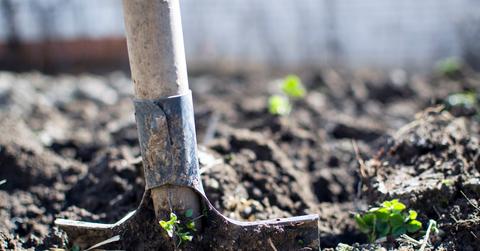Everything You Need To Know About Joining A Community Garden
Community gardens are great ways to enhance local communities, meet your neighbors, get your hands dirty, and even to feed yourself and your family without taking on a backyard garden all by yourself.
Updated May 18 2019, 6:37 a.m. ET
Community gardens are great ways to enhance communities, meet your neighbors, get your hands dirty, and even to feed yourself and your family without taking on a backyard garden all by yourself. Whether you’re in the suburbs, city, or country, community gardens are popping up everywhere, including vacant lots, rooftops, and public parks.
They often benefit food pantries, low-income families, schools, and private residences. Growing food so close to home reduces your carbon footprint, keeping produce traveling far fewer than the normal 1,500 miles (or, often, more) to get from farm to table.
Research also shows that community gardens encourage social bonds among neighbors, reduce crime rates, and offer spaces for socializing outside of the home. If you’re new to the concept of community gardens, here’s how to get started with one in your neighborhood.
Learn how community gardens work.
Community gardens have gained most of their popularity in urban areas where green space is at a premium, and many people don’t have backyards in which to grow food. Many community garden plots are located on empty lots that were donated by landowners or the city.
The trickiest part of community gardens is getting the work to be evenly or fairly split. Some spots charge a fee for membership, with that fee waived for those who can’t afford it. Others require a certain amount of hours of work from people who wish to benefit from the garden by bringing home shares of what is grown.
When you visit a community garden you’re considering volunteering for, be sure to talk about how the scheduling works. Most garden organizers and committees are happy to take on additional volunteers, and happy to work around everyone’s schedule.
Plots may be divided by person or family so everyone is responsible for his or her own section of the garden, or taken on as a whole with crops being divided up among members or donated. And don’t worry if you don't have a green thumb—most community gardens offer workshops for the uninitiated.
Consider the benefits of a community garden.
The Gardening Channel put together this list of the benefits of a community garden:
Find a community garden in your neighborhood.
Finding the community gardens near you couldn’t be easier. The American Community Garden Association has a comprehensive, searchable list of community gardens all over the country. Just plug in your zip code and see what pops up in your area. You can also search for community garden forums on Facebook, or check in with area schools and libraries.
If you can’t find anything nearby, consider joining forces with people in your town to start your own. This is a great way to bring people together, create a social network, and enhance the health of the local environment and the people who participate.
